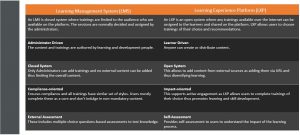The Automotive industry is witnessing lot of change in how human being’s travel. Innovations in machine & technologies and the use of shared vehicle is creating avenues of experimentation in the concept of vehicle ownership. There are multiple cab services and car hire options available for the customer where they can easily book these services and owning a car is not a requirement.
However, one of the biggest challenges to the automobile industry is coming from environment concerns, availability of fossil fuel and alternative sources like solar, electric etc. are also seeing a massive transformation. The hike in fuel prices, possibility of future ban on petrol & diesel vehicles is also creating attraction towards electric vehicles & development of alternatively fueled vehicles.
Along with the ongoing sales crunch in the automobile, consumer behavior has also changed. They are active on digital media and belong to a generation of knowledgeable and well-researched consumers. Thus, there is a change in their mind set while purchasing vehicles. Hence, sales approach must be modified to accommodate constant transformation in vehicle production and keeping with customer preferences. The sale executive need to possess advanced product knowledge to adapt to this new customer behavior.
Impact of good Customer Service in the Automotive Industry
There is competitive race going on among the number of vehicle manufacturers and they are striving to provide good quality products at a lower price. However, over a period, the customer expectations are soaring due to one or more features or benefits provided by other manufacturers. Thus, the industry is focusing more and more on improving the relationship with customers by making high investment in training employees on various facets of customer service.
For an industry as huge as the automotive, just think about the gap between customer expectations and experience when it comes to service and support. The deciding factors for good and bad customer service can be many – slow service times, poor product knowledge, phone-based appointments, and a lack of transparency when it comes to expenses. Also, it’s easier to sell a new car to a customer who already had a satisfactory experience with the brand and the dealer.
How can Customer Service be improved —the relationship and dialog with customers
- The need for maximum awareness “inside” the company
- Need to define a common purpose, a common mission, at all levels from higher management to the front line.
- Analysis of the Customer Journey
- The purchase path for a new vehicle can be very long and goes through various touchpoints. It is important to analyze this path in an omni-channel way, to be in the right place, at the right time, and with tailored communication. To achieve this, a deep analysis approach is required.
- Personal Attention on each customer
- Personalization of customer experience needs to be done by following traditional ways from email marketing campaigns, to restructuring the dynamics of assistance and service. One can even look at creating personalized sites or applications for smartphones and tablets.
How to manage the complexity of Training & Learning process
For any automotive company, apart from creating great learning content – the management of the entire training or learning process of the customer service executive can be very complex. The high level of soft skill required for unmatched customer service and huge number of trainings results in a complex training need. Being geographical distributed with huge number of learners only adds to the level of challenges.
To manage this show for learners, training providers, management and extended enterprise partners – a company must not only use corporate LMS systems, but constantly innovate its system. To imparts great experience for their customers and make an impact on business the learning management system facilitating training should be able to provide –
- Quick updates on industry changes
- Just-in time learning
- Relevant learning
- Reporting & Analytics
- Blended learning approach
We at G-Cube, provides learning management systems that enables you to train & develop your workforce to achieve all your business needs. Thus, goal of generating more revenue by increasing customer satisfaction and becoming a standalone brand can be achieved.







